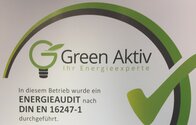We regularly receive requests from customers for an accurate noise prediction for our products. For us, the analysis of noise is an important method to ensure that our products meet customer specifications.
The DIN EN 60534-8-3 provides us with guidance. This norm specifies the test procedures and evaluation criteria that can be used to measure and assess the sound emission from valves. This includes, for example, methods for analysing noise from control valves used in process control. Furthermore, compliance with this Standard can help to avoid unnecessary costs for noise insulation and noise reduction by identifying and addressing potential noise problems from the beginning.
The challenges with noise predictions are mainly due to the accuracy of the values, which depend on many factors, such as the complexity of the facilities, the distance to a bounding wall, flow rates, materials, etc. Therefore, the measurement parameters to be collected are highly individualized. In summary, it is not easy to give a precise value.
For a long time, we had to involve third-party companies to help us make safe calculations for critical sound values. However, we recently encountered a situation where the measurement results we received were far from satisfactory. The variance was too significant, and the potential consequences were too uncertain to be ignored.
We made the decision to invest in improving our noise calculations. There was a lot of potential for optimization in this area, and we didn’t want to miss out on the opportunity.
In addition, we realized that it was not enough for us to achieve only minimum requirements. We wanted to go beyond the minimum standards. We saw Noise as a trigger for innovation and a competitive advantage for us. If we could significantly reduce sound emissions, that would be a relevant product advantage.
Therefore, for BOMAFA, this is also a sustainability topic in which we want to improve. It is also a great example of how investing in sustainability can lead to product improvement and, in the best-case, cost reduction. If we can significantly reduce noise emissions, it will become a relevant product advantage. Typically, our valves operate in the range of 85dB to 100dB. With proper insulation, we can reduce the noise level by approximately 10dB.
However, the project could not be tackled without scientific support. Noise predictions require expertise and knowledge. The expert we needed was Prof. Dr.-Ing. Christian Bongmba from the Technical University of Deggendorf. He supported us with new calculation methods.
Our technical office and Mr. Kloss provided the necessary experience. He incorporated the newly developed measurement values into our previous calculations by using a safety factor in the calculations.
In addition, a catalogue was developed to clearly define the values and parameters that customers must provide for their specific application. The goal is to incorporate the most accurate information as early as possible in the design and planning of the system to avoid retroactive planning changes.
On this basis, we were able to significantly improve our methodology and measurement results. One could also say that we have scientifically validated our approach and learned from experience.
Thank you to all those involved for this innovation.


